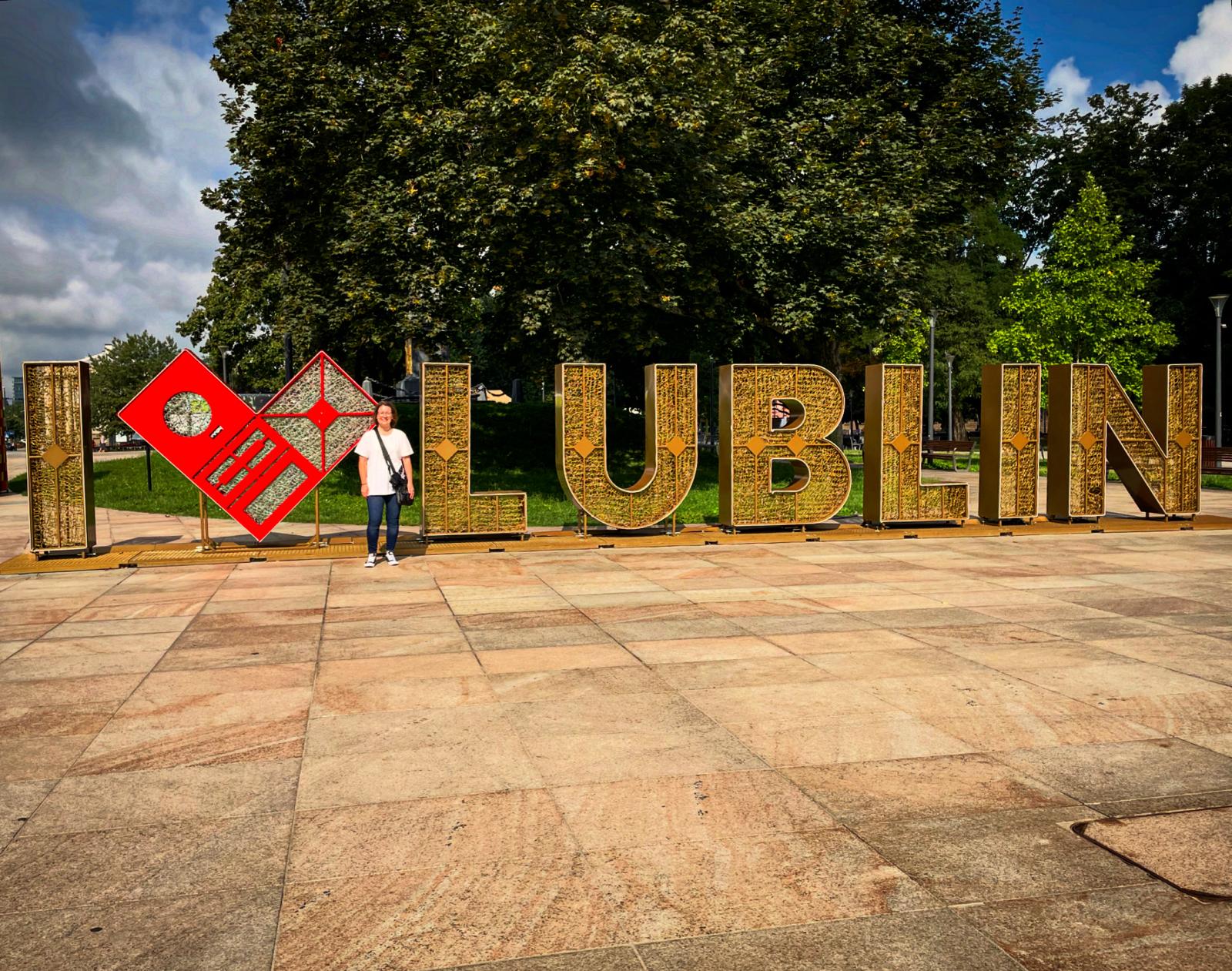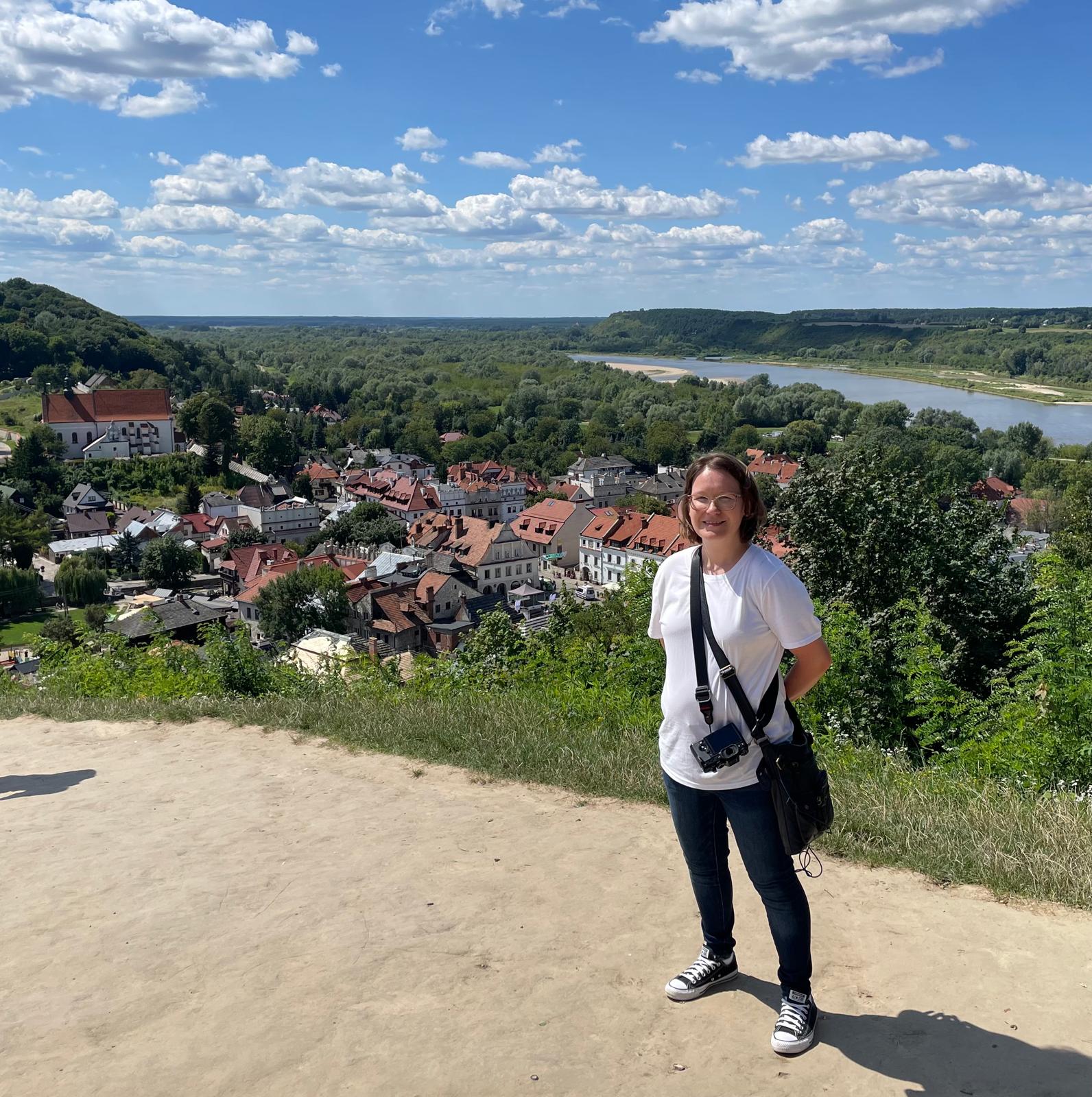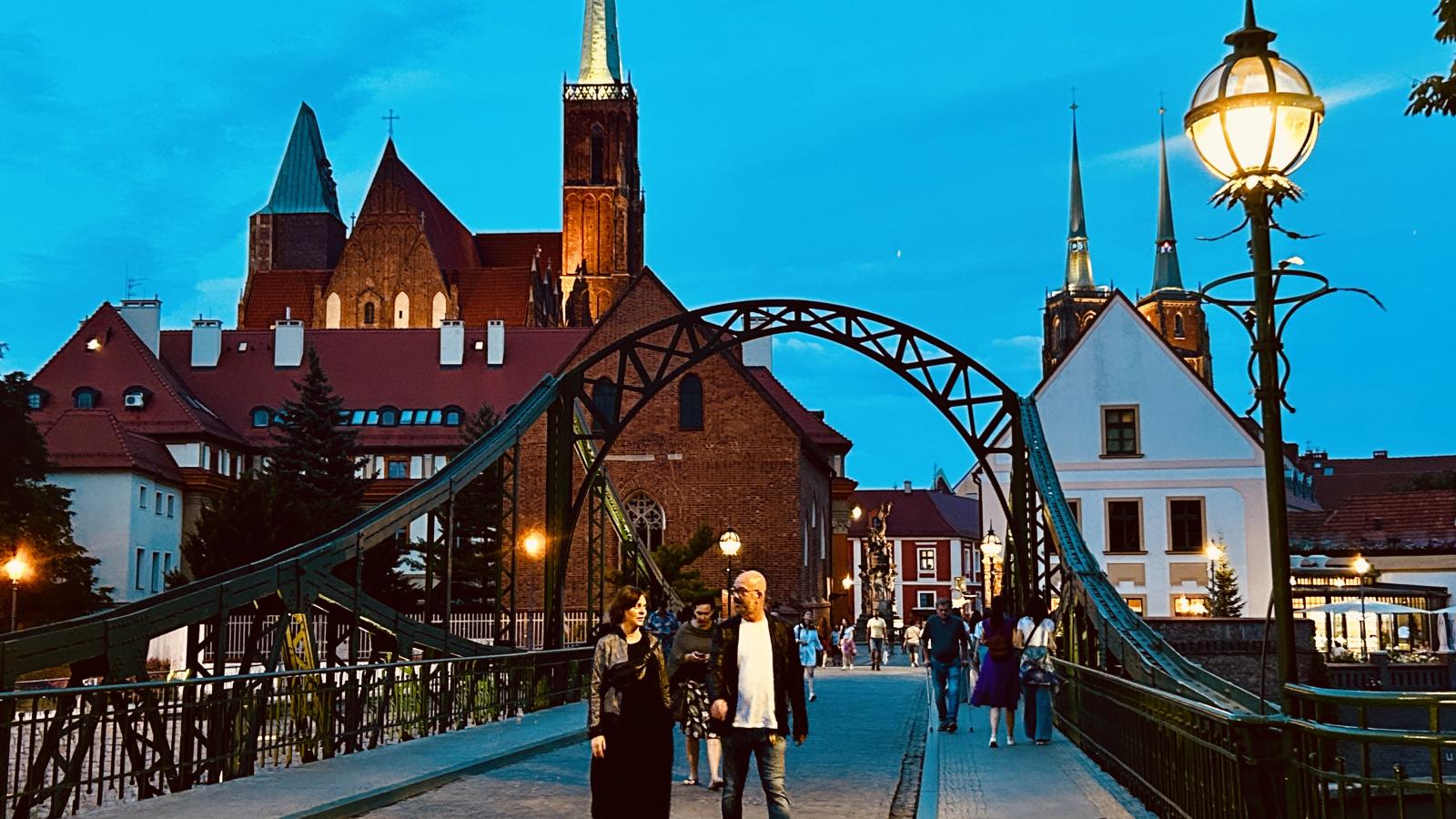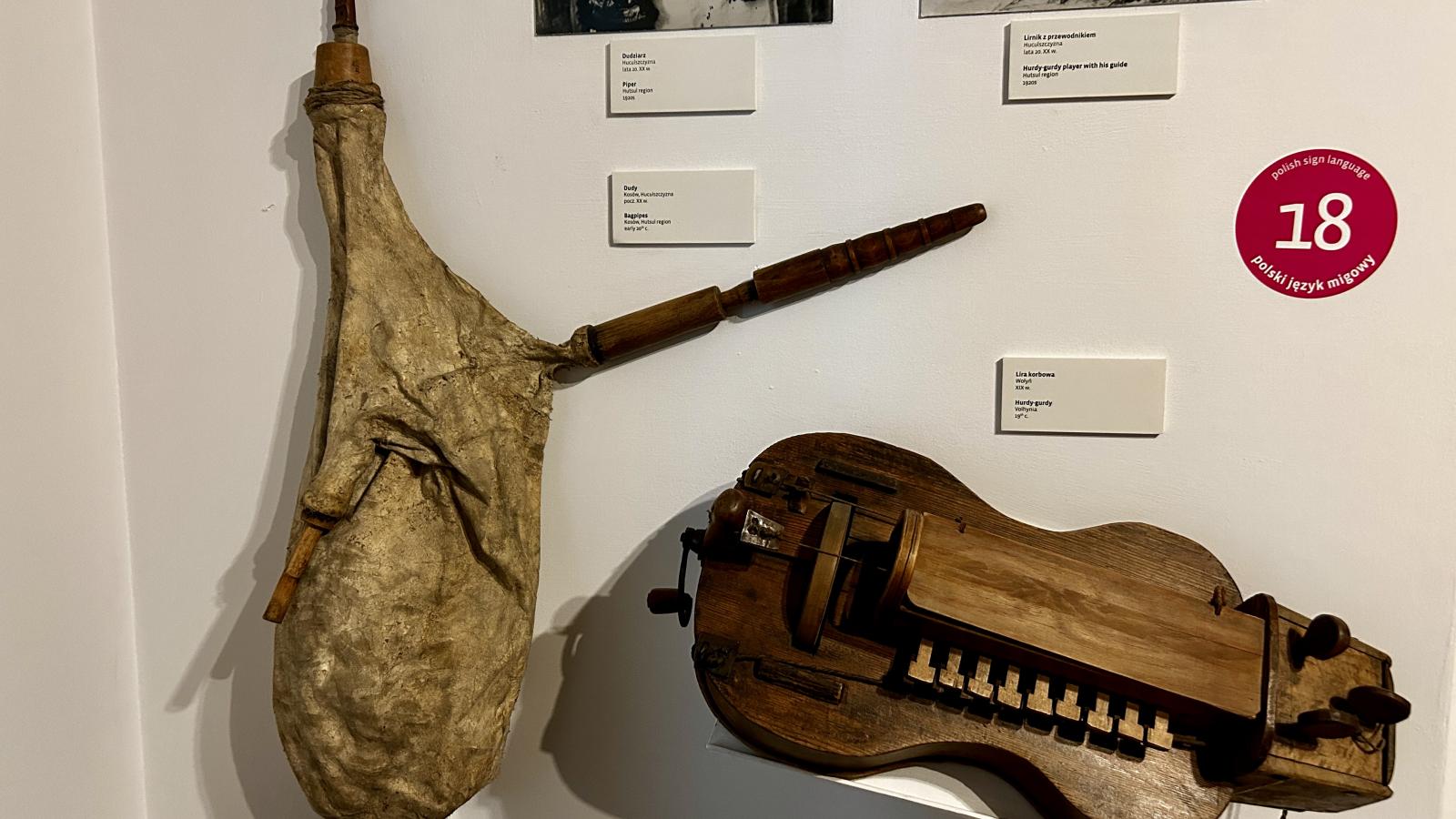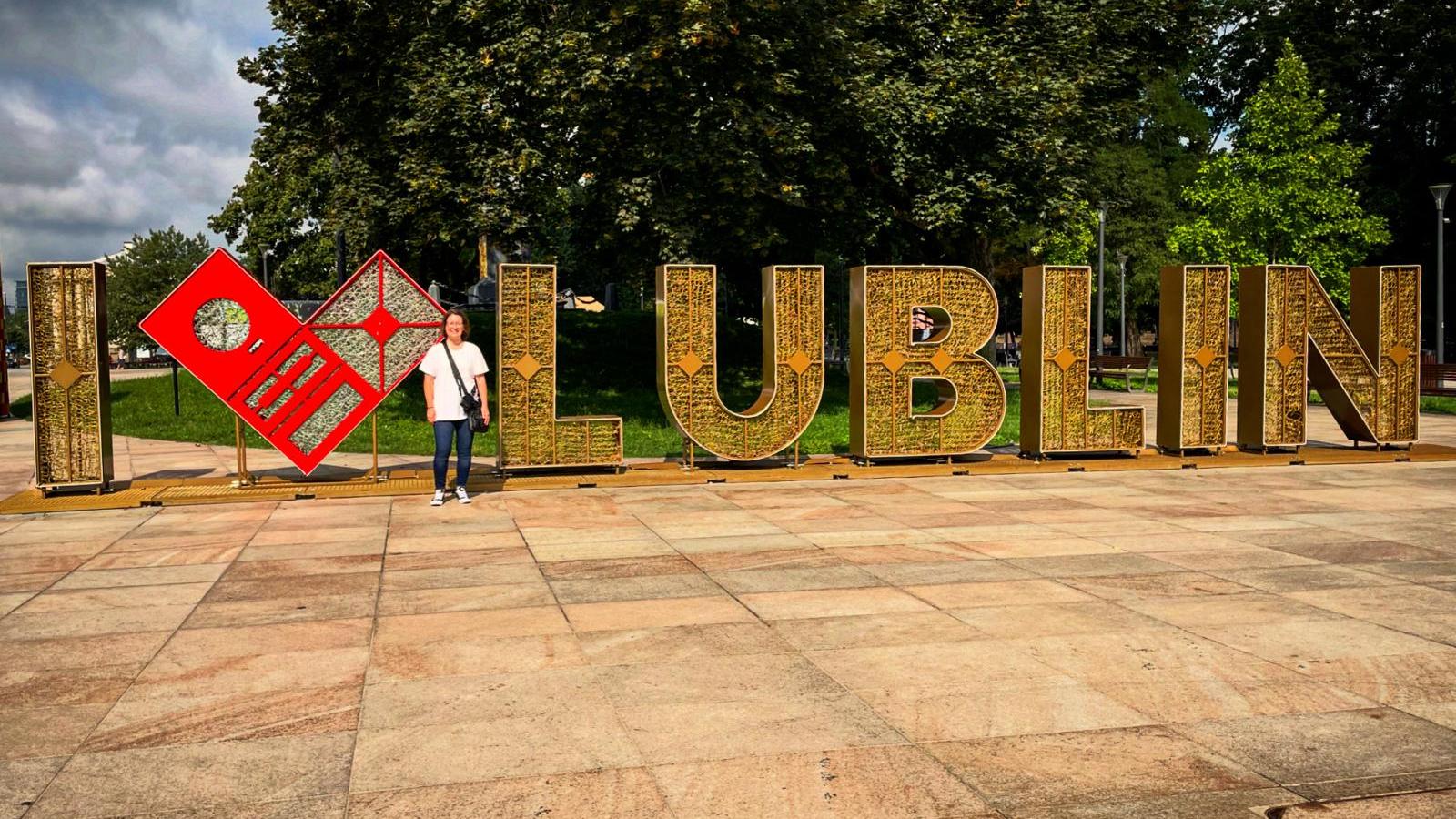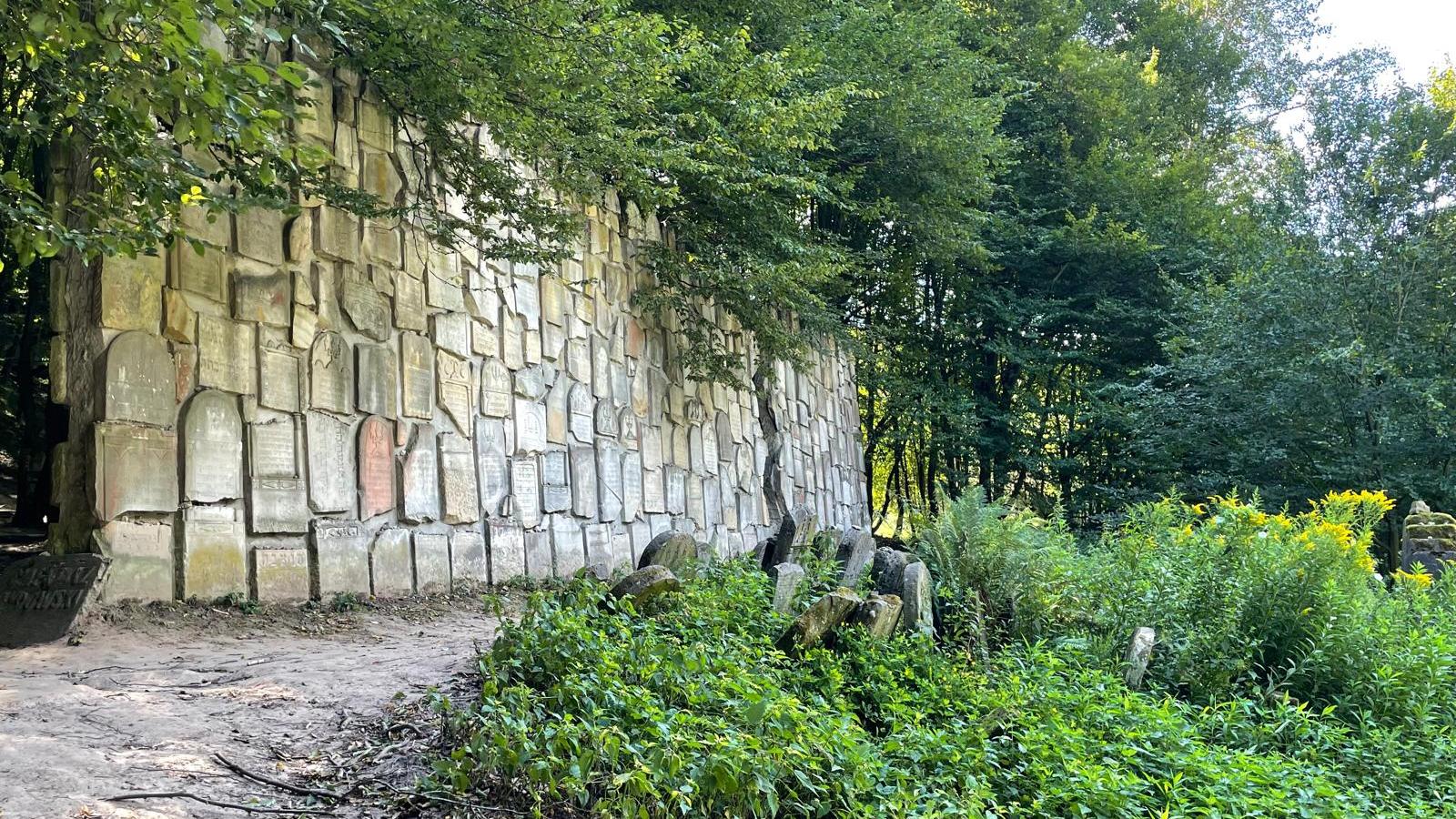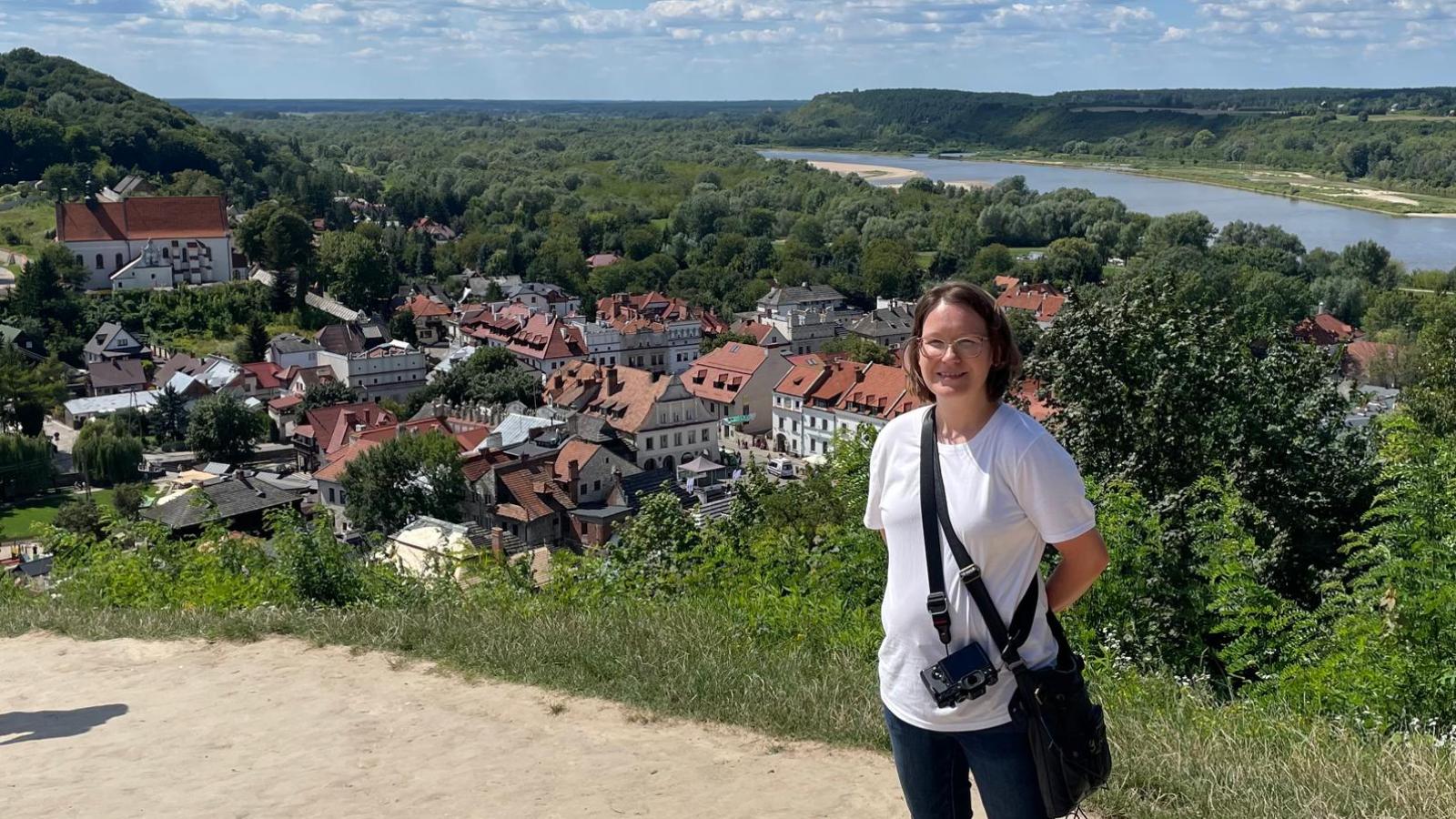Summer Adventures: Polish Edition feat. Alicia Baca and Diana Sacilowski
Over the summer CSEEES’ outreach coordinator Alicia Baca and SEELC Assistant Professor of Teaching Dr. Diana Sacilowski spent time in Poland conducting research for personal projects as well as study. In addition to research and travel, they collaborated with their colleague Dr. Julia Keblinska on one of CSEEES’ upcoming online learning modules called “Exploring Poland.” This module will be a free to use resource for K-14 educators and students as well as for anyone else who is interested in learning more about the country and its culture and history. Read more below to learn more about what they did while traveling around Poland.
Alicia Baca
While most may know me as CSEEES’ outreach coordinator, when I joined the Center, I was also assigned the role of program coordinator for our Polish Studies Initiative (PSI). Admittedly, I did not have any previous training in this field before coming to Ohio State as my undergraduate and graduate degrees are in Russian studies. In an effort to fill that gap in my knowledge and to help me better connect with the Polish American communities that CSEEES works with I have been studying Polish for the past two years. This summer I had the opportunity to travel there for almost six weeks to further my own study of Polish culture and history. This trip allowed me to strengthen my language skills, collect information for the upcoming "Exploring Poland” module, and find items for a new Poland culture box that can be borrowed by K-14 educators to use in their classrooms.
During the first two weeks, I traveled around Warsaw and Wrocław and spent much of my time exploring different museums such as the National Museum in Warsaw, the Fryderyk Chopin Museum, POLIN, and many more. I also went on several walking tours where I learned more about the history of Old Town Warsaw, Jewish Warsaw, Cathedral Island, and Old Town Wrocław. I found the walking tour of Old Town Warsaw to particularly impactful as I have had an ongoing side interest in architecture and learning about how the area was reconstructed in great detail after World War II gave me a whole new appreciation for the place that I was exploring and staying in. This is something that I was very excited to highlight in the module and I am hopeful that younger students will also come admire all the effort and work that went into rebuilding this historic site. I also thoroughly enjoyed the Chopin museum. As someone who has both an academic and personal interest in folk music and music history I felt that the interactive exhibits there offered a unique way to learn more about the influence that Polish folk music had on Chopin’s work throughout his life.
The remaining month was spent in Kraków as I had been accepted into the Polish Summer Language Institute hosted by the University of Pittsburgh. While there, I spent time polishing my Polish with other students from across the globe. The program itself was an intensive one where we typically spent 6-7 hours a day in language classes, but I also made time for continued research to help with the development of parts of the module. Some notable places included the Ethnographic Museum, the Czartoryski Museum, the Market Underground Museum, and the gallery of 19th Century Polish art inside Sukiennice. The Ethnographic Museum in particular was my favorite as it houses many folk instruments from across the country including hurdy gurdies, a variety of bag and bladder pipes, jaw harps, and alpenhorns. I did try to carve out some time to relax when I could. When I was not trying to stuff my brain and notebook with as much information as possible, I hunted down a handful of the hundreds of gnome statues that are scattered all around Wrocław, went hiking in the Tatra Mountains, attended a folk arts festival in Kraków, and of course, enjoyed delicious Polish food.
This trip gave me a whole new love and appreciation for the language and culture I have been studying and I do hope to go back and visit other parts of Poland in the future. In the meantime, I am excited to share what I learned with a younger generation of students and their teachers through my outreach work here at Ohio State.

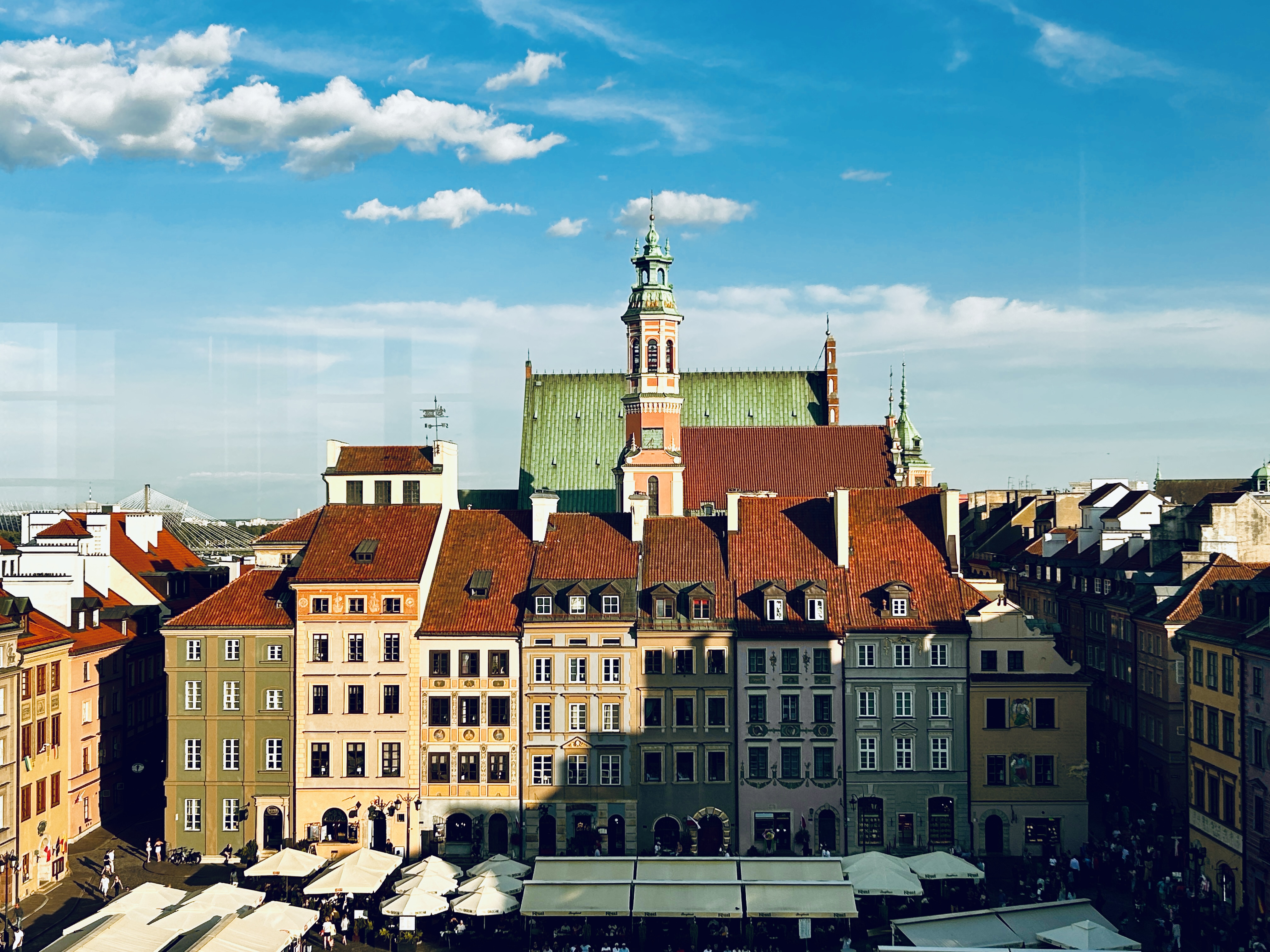
Diana Sacilowski
During July I traveled to Kazimierz Dolny, Zamość, and Lublin to conduct research for a project tentatively titled “‘Going There’: Seeing and Attending to the Muted Traces of Poland’s Jewish Past.” The project explores how various literary texts intersect with sites of memory to better understand the key ideas and methods underpinning Poland’s so-called Jewish “return,” a period, beginning in the early 1980s, that has witnessed a great revival in interest in Jewish culture and history. I primarily spent time visiting monuments, memorials, and other physical commemorative projects that engage with Poland’s Jewish history. This allowed me to build a more comprehensive picture of the various memorial practices employed during the Jewish “return” and a more detailed comparison between such sites and the literature produced during this time.
I began my research journey in Warsaw, where I visited a wonderful new temporary exhibit at POLIN, entitled “(post)JEWISH… Shtetl Opatów Through the Eyes of Mayer Kirshenblatt.” Given that I would be exploring places that once had large Jewish populations and looking at how these places today remember such populations, I thought the exhibit, which examines the Jewish history of the town of Opatów and memories and memorialization of that history, was a good way to kick things off. Inspired, I then set off on a rather whirlwind tour.
First, I went to Lublin, where I visited the “Grodzka Gate – N.N. Theater” Center, an institution dedicated to the exploration and preservation of the Jewish heritage of Lublin and the surrounding area. The Center’s museum space, structured as a kind of interactive archive, was fascinating, and it was great to learn about some of the memory projects the Center is involved in. I also re-visited Majdanek, a Nazi concentration and extermination camp in Lublin. From there, I set off to Zamość, a beautiful city in southeast Poland. Here, I visited the city’s synagogue and a number of memorial sites, including the Zamość Rotunda, a site where Poles were imprisoned and executed by Nazis during World War II, as well as a monument placed at the site of one of the devastated Jewish cemeteries in the city. I also did a walking tour of the Zamość based on Piotr Szewc’s text Zagłada (Annihilation; 1987). The book features a narrator trying to paint a picture of this town before World War II, before its Jewish community was destroyed, and I wanted to try to walk in the narrator’s steps and map out the book on the actual streets it mentions. The experience definitely gave me a more nuanced perspective of what the text is trying to do. My journey came to end in Kazimierz Dolny, a picturesque town on the Vistula that also once had a large Jewish population. I studied a monument placed on the site of a former Jewish cemetery here as well and walked the town in search of traces of matzevot, Jewish gravestones, that were taken from the destroyed cemeteries in the area and used as building materials in walls and other edifices. The trip as a whole was a heavy experience, at times quite emotional, but also very informative and enlightening. I’ve read about these sites and memorials, but seeing them in person gave me a deeper understanding of the preservation (and sometimes lack thereof) of Jewish heritage taking place in Poland.
I look forward to sharing more about some of the things I saw in a Polish Studies Initiative lecture in the near future. This trip also gave me the opportunity to take some pictures and collect information to use for the upcoming CSEEES "Exploring Poland” module, which I’m excited for everyone to see as well!
